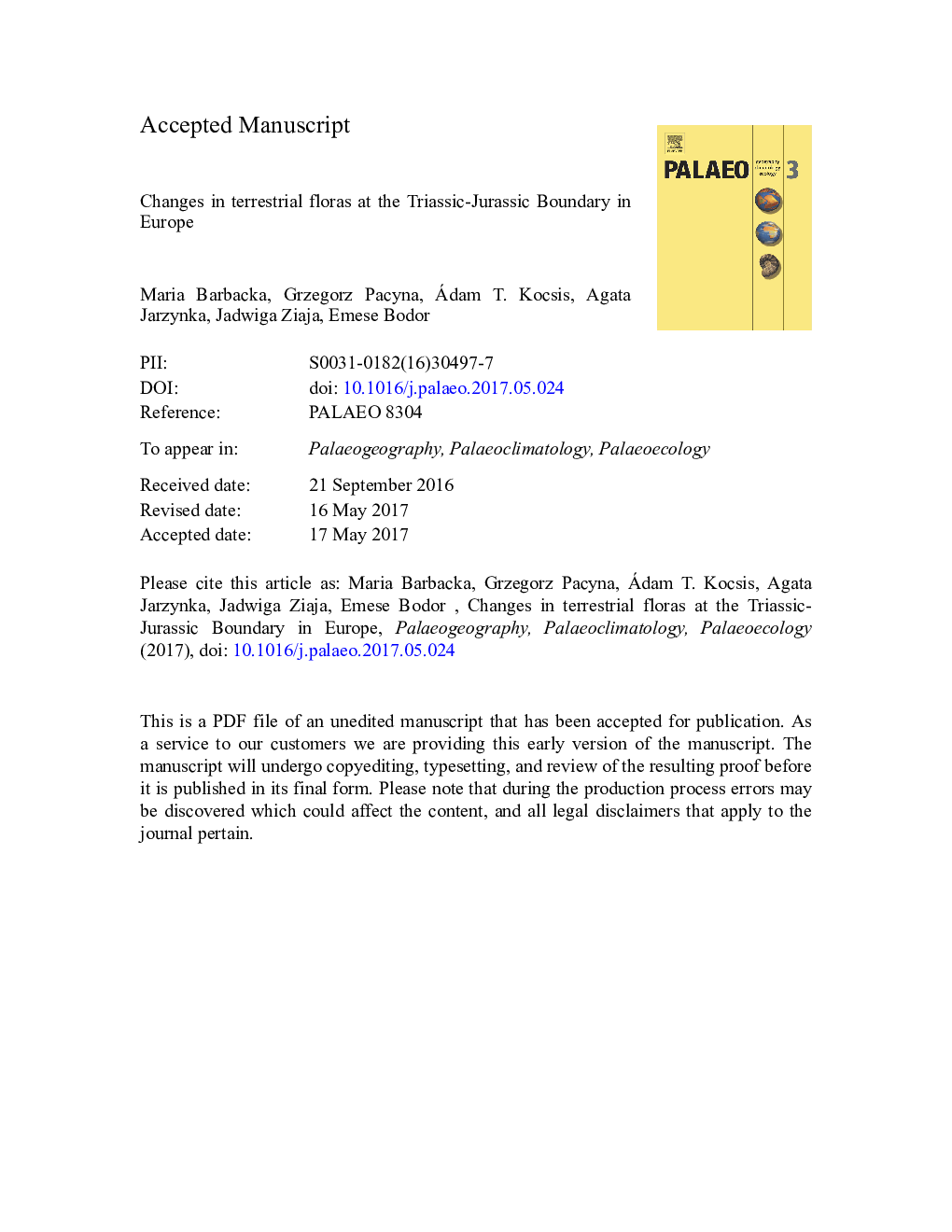| Article ID | Journal | Published Year | Pages | File Type |
|---|---|---|---|---|
| 5755632 | Palaeogeography, Palaeoclimatology, Palaeoecology | 2017 | 59 Pages |
Abstract
Range-based metrics for diversity dynamics were calculated to show trends in floral changes during the studied time interval, the focus being on the TJB. Due to strong disproportions in the number of localities and occurrences, the Rhaetian and the Hettangian stages were overrepresented. The warm and humid climate of those stages promoted plant diversity and led to the formation of numerous broad floodplains conducive to the preservation of remains (e.g. in coal). The patterns established by the raw data analyses were also assessed by applying a sampling standardisation procedure. Our results, based on accurate data from Poland and the rest of Europe, confirm and visualize a scenario in which there were no significant changes in terrestrial plant composition at the TJB. Hierarchical clustering suggests that local habitat conditions are the key factor in the grouping of localities with similar floristic composition, and that differences between floras are not associated with the time dimension (stages).
Related Topics
Physical Sciences and Engineering
Earth and Planetary Sciences
Earth-Surface Processes
Authors
Maria Barbacka, Grzegorz Pacyna, Ádam T. Kocsis, Agata Jarzynka, Jadwiga Ziaja, Emese Bodor,
